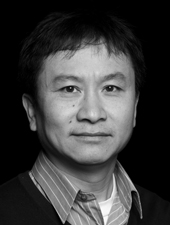Zheng, H., Ying, H., Yan, H., Kimmelman, A. C., Hiller, D. J., Chen, A. J., Perry, S. R., Tonon, G., Chu, G. C., Ding, Z., Stommel, J. M., Dunn, K. L., Wiedemeyer, R., You, M. J., Brennan, C., Wang, Y. A., Ligon, K. L., Wong, W. H., Chin, L., dePinho, R. A. (2008) Pten and p53 converge on c-Myc to control differentiation, self-renewal, and transformation of normal and neoplastic stem cells in glioblastoma. Cold Spring Harbor Symposia on Quantitative Biology, 73. pp. 427-37. ISSN 0091-7451
Abstract
Glioblastoma (GBM) is a highly lethal primary brain cancer with hallmark features of diffuse invasion, intense apoptosis resistance and florid necrosis, robust angiogenesis, and an immature profile with developmental plasticity. In the course of assessing the developmental consequences of central nervous system (CNS)-specific deletion of p53 and Pten, we observed a penetrant acute-onset malignant glioma phenotype with striking clinical, pathological, and molecular resemblance to primary GBM in humans. This primary, as opposed to secondary, GBM presentation in the mouse prompted genetic analysis of human primary GBM samples that revealed combined p53 and Pten mutations as the most common tumor suppressor defects in primary GBM. On the mechanistic level, the "multiforme" histopathological presentation and immature differentiation marker profile of the murine tumors motivated transcriptomic promoter-binding element and functional studies of neural stem cells (NSCs), which revealed that dual, but not singular, inactivation of p53 and Pten promotes cellular c-Myc activation. This increased c-Myc activity is associated not only with impaired differentiation, enhanced self-renewal capacity of NSCs, and tumor-initiating cells (TICs), but also with maintenance of TIC tumorigenic potential. Together, these murine studies have provided a highly faithful model of primary GBM, revealed a common tumor suppressor mutational pattern in human disease, and established c-Myc as a key component of p53 and Pten cooperative actions in the regulation of normal and malignant stem/progenitor cell differentiation, self-renewal, and tumorigenic potential.
Actions (login required)
 |
Administrator's edit/view item |
